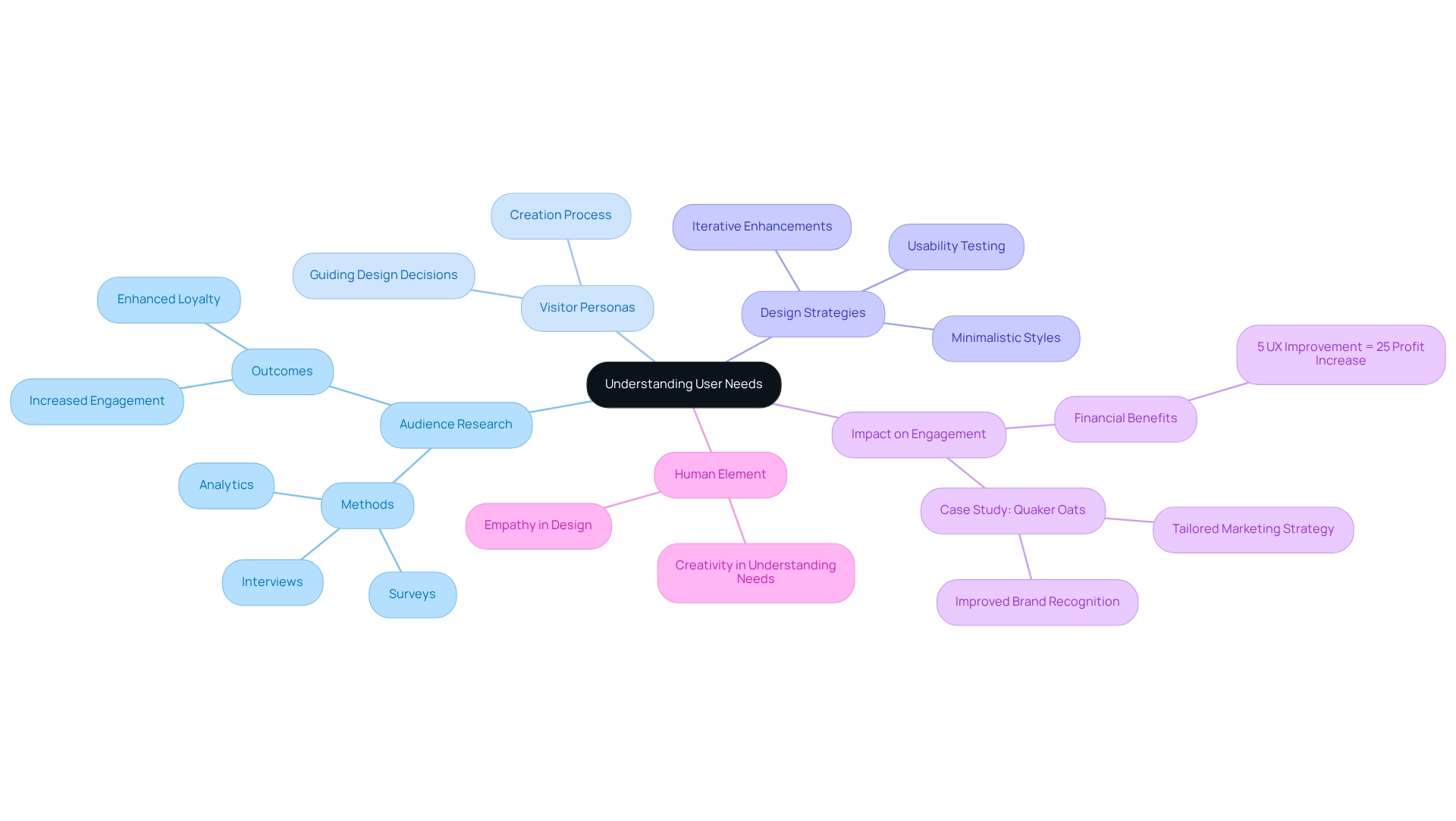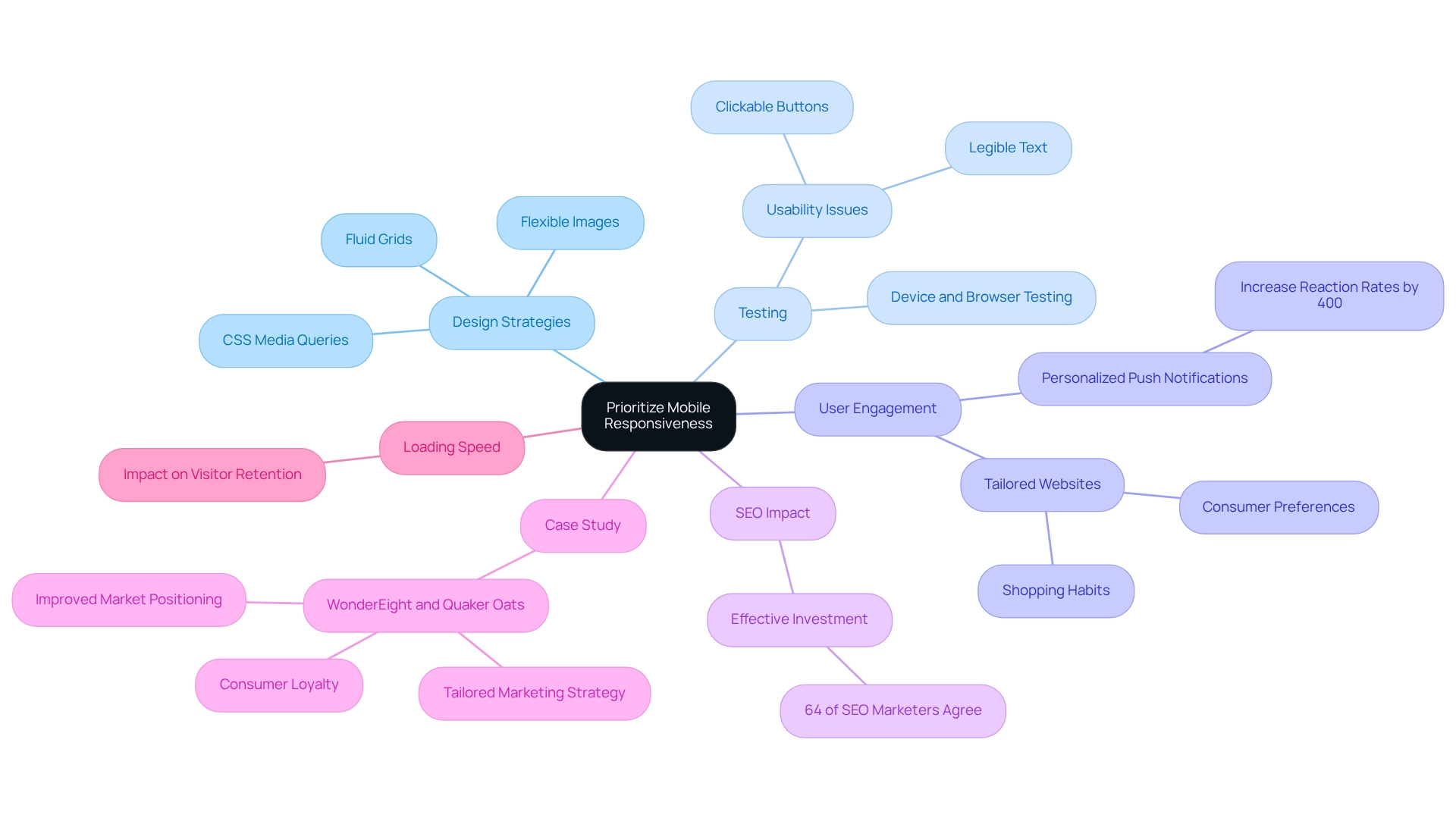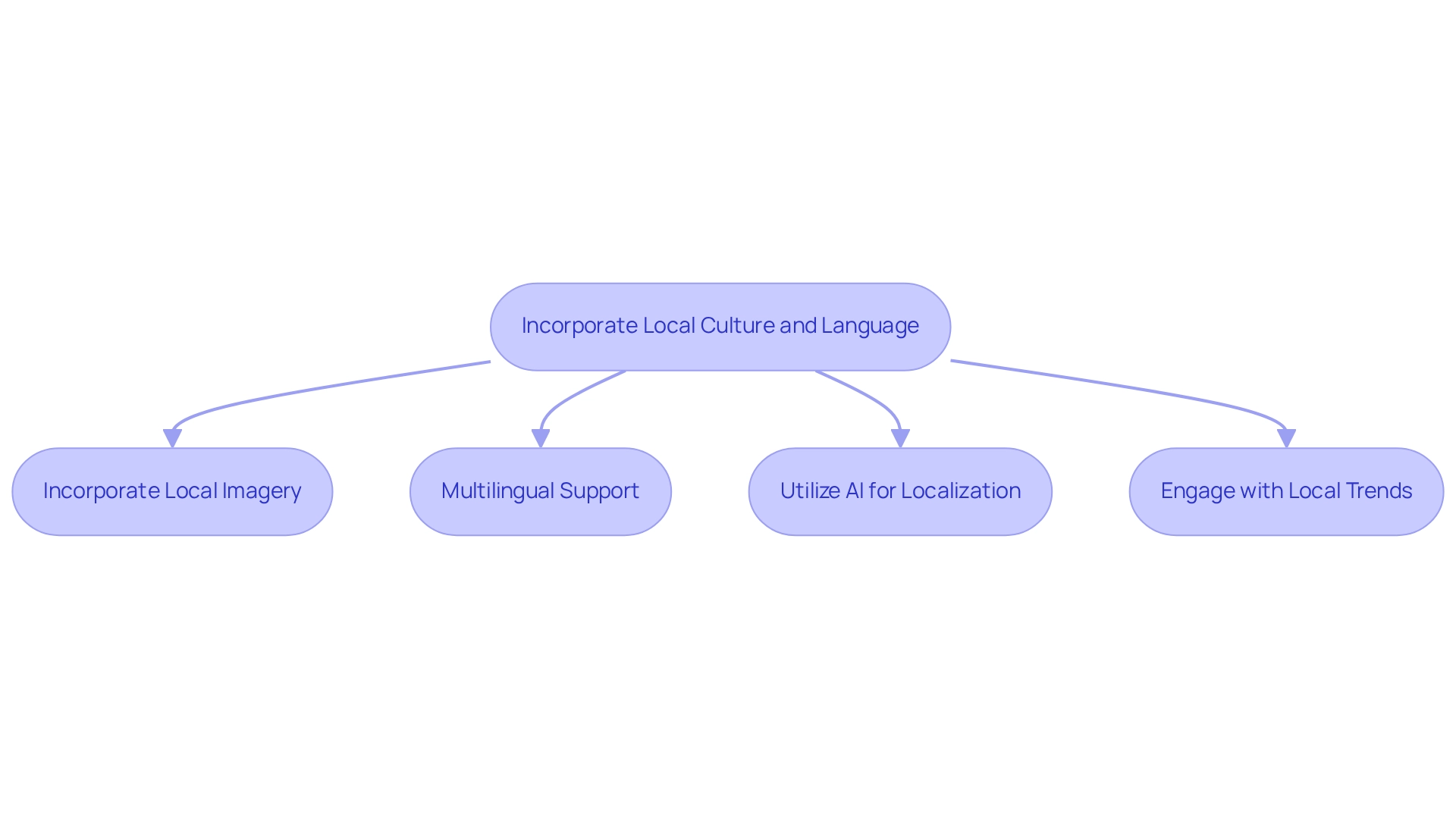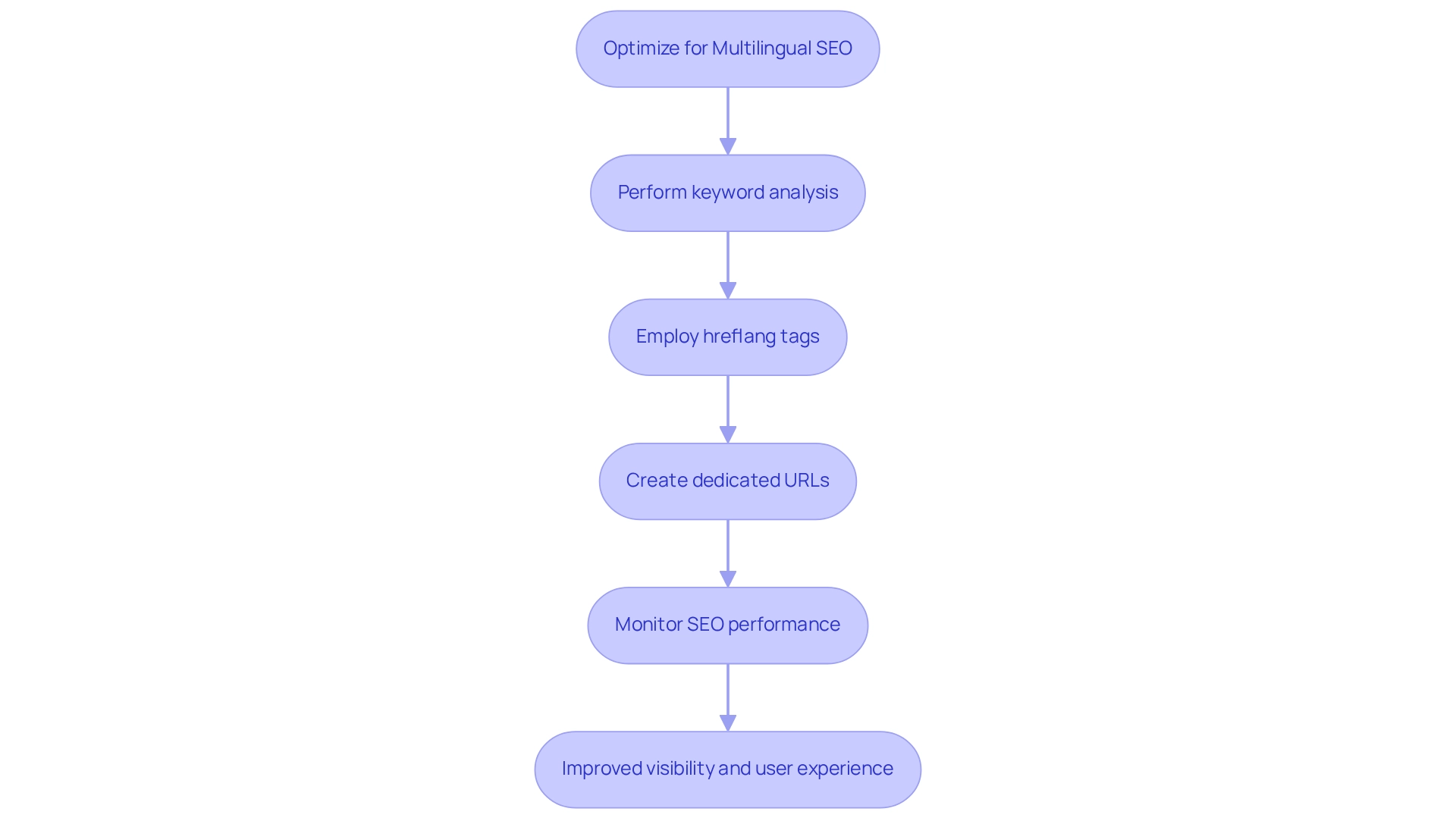Sustainable Branding Practices
Best Practices for Website Design in the Emirates: Enhance User Engagement
Overview
Best practices for website design in the Emirates are crucial for enhancing user engagement. Understanding user needs through comprehensive research is paramount.
- Prioritizing mobile responsiveness is not just an option; it is a necessity.
- Incorporating local culture and language into the design is essential, as is optimizing for multilingual SEO.
These strategies significantly improve user experience and satisfaction, driving higher engagement and loyalty. This is evidenced by successful case studies, such as WonderEight’s collaboration with Quaker Oats, which tailored their approach to meet specific audience preferences and cultural nuances.
By implementing these practices, Brand Managers can ensure their websites resonate with users, ultimately fostering a deeper connection and commitment.
Introduction
In an increasingly interconnected world, understanding and engaging diverse audiences is paramount. As businesses strive to forge meaningful connections, prioritizing user-centric design, mobile responsiveness, and cultural relevance in digital strategies is essential. This article explores key practices that can significantly enhance user engagement and loyalty.
From conducting comprehensive user research to optimizing websites for multilingual audiences, we will provide insights that drive results. Drawing from successful case studies, including WonderEight’s collaboration with Quaker Oats, readers will learn how to effectively tailor their online presence to meet the evolving needs of users. This strategic approach ultimately propels business success in a competitive landscape.
Understand User Needs and Preferences
To effectively engage individuals, conducting thorough audience research is paramount. Employ methods such as surveys, interviews, and analytics to gather valuable insights into your audience’s preferences, behaviors, and pain points. Creating visitor personas that accurately reflect your typical audience serves as a crucial guide for your creative decisions.
For instance, if research indicates a preference for minimalistic styles with straightforward navigation, these elements should take precedence in your website layout. Furthermore, usability testing can provide direct feedback on prototypes, enabling iterative enhancements based on real interactions. This audience-focused approach not only boosts engagement but also cultivates loyalty, as individuals perceive that their needs are genuinely prioritized.
Notably, enhancing experience design by just 5% can lead to an impressive 25% increase in profit, underscoring the financial benefits of prioritizing needs in design strategies. As Annemarie Bufe, Content Manager, asserts, “Ensure your product’s success with MVP testing. Discover what it is, how to validate your MVP, and best practices for collecting insights from individuals.”
Additionally, the tailored marketing strategy developed for Quaker Oats by WonderEight exemplifies how effective consumer research can enhance brand recognition and customer engagement, illustrating the practical application of these principles. While AI can assist in data analysis, it cannot replicate human empathy and creativity, which are essential for understanding client needs.

Prioritize Mobile Responsiveness
Adopting a mobile-first design strategy is essential for ensuring your website is fully responsive across all devices. This approach involves utilizing fluid grids, flexible images, and CSS media queries to adapt layouts to various screen sizes. Rigorous testing on multiple devices and browsers is crucial to identify usability issues. For instance, ensure that buttons are easily clickable on smaller screens and that text remains legible without the need for zooming. Moreover, the loading speed of your mobile site is a crucial element; sluggish performance can greatly discourage visitors.
According to recent insights, personalizing push notifications can boost reaction rates by up to 400%, underscoring the importance of a seamless mobile experience. Furthermore, 64% of SEO marketers affirm that mobile optimization is an effective investment, highlighting its significance in today’s digital landscape. Websites must be tailored to consumer preferences and shopping habits to enhance engagement. Tools like Google’s Mobile-Friendly Test can provide valuable assessments of your site’s responsiveness, offering actionable insights for enhancement.
By prioritizing mobile responsiveness, you can significantly improve user engagement and satisfaction. A practical example of this is WonderEight’s collaboration with Quaker Oats, where a tailored mobile-first strategy led to improved market positioning and consumer loyalty. With about 15 billion mobile devices having 5G connections in 2021, the urgency for mobile responsiveness has never been greater.

Incorporate Local Culture and Language
To effectively engage the UAE audience, weaving local cultural elements into your website design is essential. Utilizing imagery, colors, and symbols that resonate with the region’s heritage significantly enhances connection for individuals. For instance, incorporating traditional patterns or showcasing local landmarks not only enhances visual appeal but also cultivates a deeper connection with individuals. Furthermore, given the UAE’s diverse population, supporting both Arabic and English is crucial. Statistics indicate that 80% of online shoppers prefer to conduct business in their native tongue, underscoring the importance of multilingual support. Incorporating a translation switcher feature enables individuals to choose their preferred language with ease, addressing their linguistic inclinations. By aligning your website with local culture and dialect, you enhance user experience and express sincere respect for the audience’s identity, ultimately fostering engagement and loyalty. Additionally, as noted by Business Wire, 65% of businesses find that using AI for localization helps tailor content to specific cultural nuances, further boosting engagement and results. A practical example of this is WonderEight’s collaboration with Quaker Oats, where a tailored marketing strategy enhanced brand presence and consumer loyalty.
To apply these best practices, consider the following steps:
- Incorporate Local Imagery: Use visuals that reflect the UAE’s culture and heritage.
- Multilingual Support: Implement a translation switcher for Arabic and English.
- Utilize AI for Localization: Leverage AI tools to customize content for cultural relevance.
- Engage with Local Trends: Stay updated on local events and trends to keep your content relevant by applying the best practices for website design in the emirates.
By integrating local culture and leveraging technology, brands can create a more impactful online experience, showcasing WonderEight’s expertise in delivering innovative marketing solutions across diverse industries, including Digital Strategy and SEO Consultancy.

Optimize for Multilingual SEO
To efficiently enhance your website for diverse audiences, begin with comprehensive keyword research in various languages, concentrating on terms that resonate with local users. As Kristina Temelkova wisely advises, “Make sure that you are well acquainted with your target market(s).” Implementing hreflang tags is crucial for indicating dialect and regional variations to search engines, significantly improving visibility. Establish dedicated URLs for each language version of your site, ensuring that every iteration is fully localized rather than merely translated. This localization must encompass cultural nuances and preferences to elevate user experience.
WonderEight positions itself at the forefront of the branding space through its effective marketing strategies. Consider these best practices:
- Perform comprehensive keyword analysis in the target dialects to identify relevant terms.
- Employ hreflang tags to inform search engines about dialect and regional targeting.
- Create dedicated URLs for each version, ensuring full localization.
- Monitor SEO performance using tools like Google Analytics to analyze traffic sources and individual behavior.
Additionally, be mindful of common pitfalls such as overlooking cultural differences or neglecting to follow the best practices for website design in the emirates, including the regular updating of content. Regularly monitoring your SEO performance through tools like Google Analytics will enable you to analyze traffic sources and user behavior across different language versions, facilitating ongoing optimization and ensuring your strategies remain effective.

Conclusion
Understanding and engaging diverse audiences is essential for businesses striving to build meaningful connections in today’s digital landscape. This article outlines key practices that can significantly enhance user engagement and loyalty, including:
- The importance of conducting thorough user research
- Prioritizing mobile responsiveness
- Incorporating local culture and language
- Optimizing for multilingual SEO
By focusing on user needs and preferences, businesses can create tailored experiences that resonate with their audience, leading to increased loyalty and profitability. Embracing a mobile-first design strategy is not just a trend; it is a necessity that can dramatically improve user satisfaction and engagement. Additionally, weaving local cultural elements into digital strategies fosters a deeper connection with users, while multilingual support ensures that businesses can effectively communicate with diverse audiences.
Ultimately, these practices underscore the necessity of a user-centric approach in digital strategies. As demonstrated through successful case studies like WonderEight’s collaboration with Quaker Oats, implementing these strategies can drive significant results in brand recognition and consumer loyalty. In a competitive landscape, prioritizing user experience not only enhances engagement but also contributes to sustained business success, making it clear that understanding and addressing the needs of users is paramount for any organization looking to thrive in the digital age.
Frequently Asked Questions
Why is audience research important for engagement?
Conducting thorough audience research is crucial for effectively engaging individuals as it provides valuable insights into their preferences, behaviors, and pain points.
What methods can be used to gather audience insights?
Methods such as surveys, interviews, and analytics can be employed to gather insights into the audience.
How can visitor personas aid in creative decisions?
Creating visitor personas that accurately reflect the typical audience serves as a crucial guide for making informed creative decisions.
What should be prioritized in website layout based on audience preferences?
If research indicates a preference for minimalistic styles with straightforward navigation, these elements should take precedence in the website layout.
What is the role of usability testing in audience engagement?
Usability testing provides direct feedback on prototypes, enabling iterative enhancements based on real interactions, which boosts engagement.
How does an audience-focused approach impact loyalty?
An audience-focused approach cultivates loyalty, as individuals feel that their needs are genuinely prioritized.
What financial benefits can come from enhancing experience design?
Enhancing experience design by just 5% can lead to an impressive 25% increase in profit.
What does MVP testing involve?
MVP testing involves discovering what a minimum viable product is, how to validate it, and best practices for collecting insights from individuals.
Can AI fully replace human empathy and creativity in understanding client needs?
No, while AI can assist in data analysis, it cannot replicate human empathy and creativity, which are essential for understanding client needs.
Can you provide an example of effective consumer research?
The tailored marketing strategy developed for Quaker Oats by WonderEight exemplifies how effective consumer research can enhance brand recognition and customer engagement.



